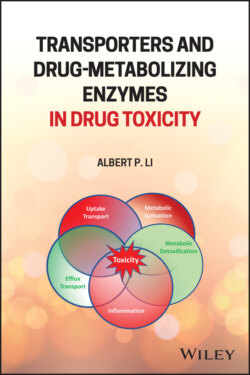Читать книгу Transporters and Drug-Metabolizing Enzymes in Drug Toxicity - Albert P. Li - Страница 25
2.3 Reactive Metabolite Formation and Assessment
ОглавлениеThe physiological role of drug metabolism is detoxification, i.e. the biotransformation of lipophilic compounds into stable water‐soluble metabolites, which are more readily eliminated from the body. However, drug metabolism can also lead to toxicity by the biotransformation of foreign compounds into metabolites which could be intrinsic to chemical reactivity for macromolecules. Such metabolites typically are unstable and undetectable in plasma, and usually have half‐lives of less than one minute. They can be electron‐deficient electrophiles or free radicals containing an unpaired electron [7], but most are electrophilic in nature [8]. Also, they are reactive with electron‐rich nucleophiles such as biological macromolecules in which the functional side chains of arginine, lysine, histidine, cysteine, aspartic acid, glutamic acid, and tyrosine are potent nucleophiles in the unprotonated state [9].
RMs can irreversibly bind to and modify biological macromolecules such as enzymes, mitochondrial proteins, RNA, and DNA, and some of these mechanisms can eventually cause hepatocellular damage. For example, RMs can lead to an immune response by forming hepatic protein adducts. The overloading of RMs can deplete GSH, and the lack of GSH in the liver results in oxidative stress. They can also directly inhibit the BSEP, which may disrupt liver function and lead to hepatic injury. Free radicals also can bind lipids, initiating a chain reaction leading to lipid peroxidation, oxidative stress, or modification of biological macromolecules.
